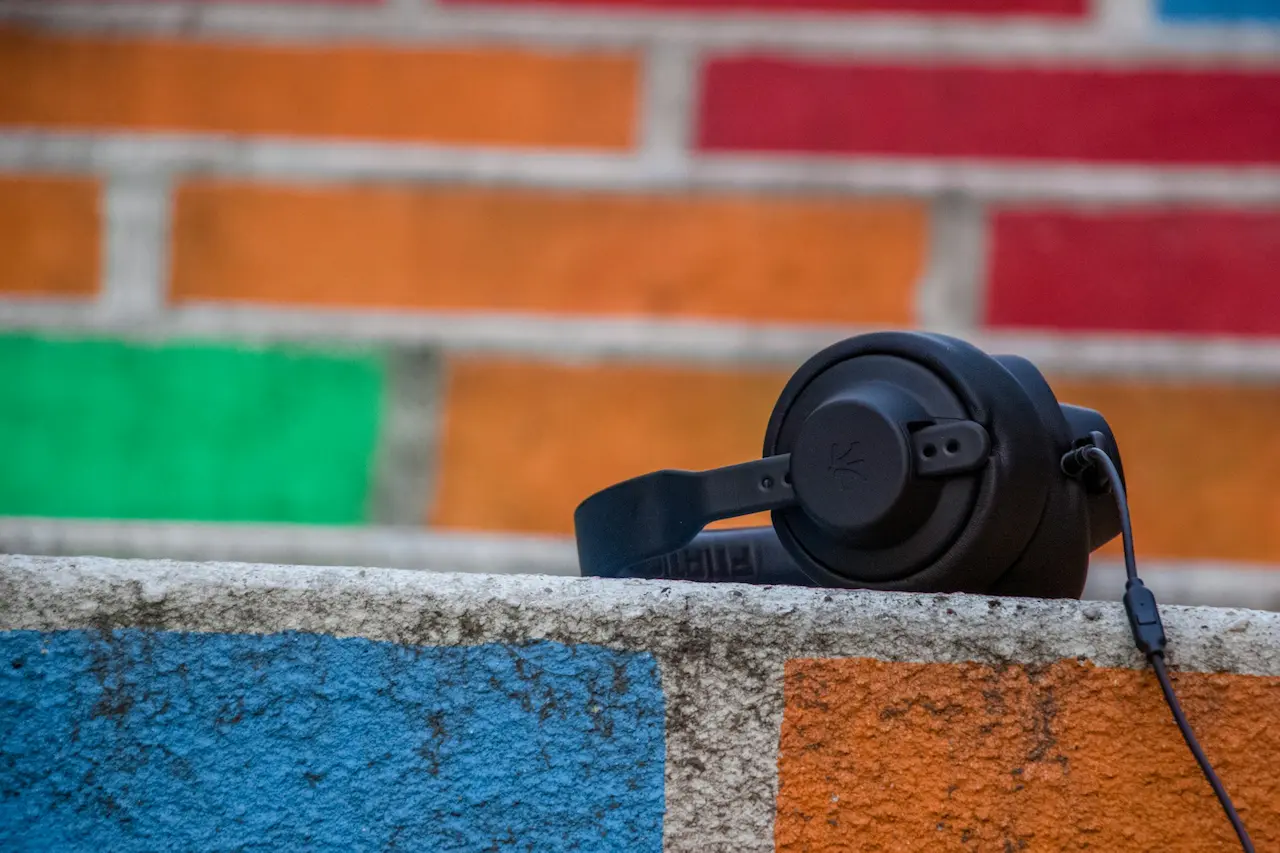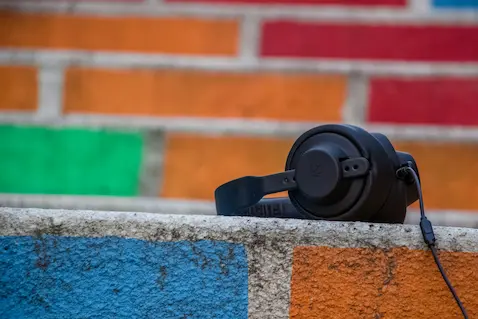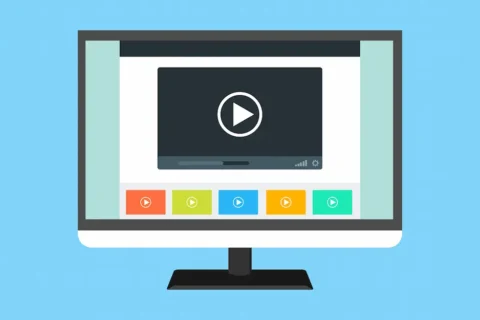If we want students to listen to songs the way real listeners do – noticing meaning, feeling, and connections – we need to start with what the song says and how it makes them feel, before zooming in on specific language.
This shift – from general appreciation, to style, to deeper meaning, to language – is much more motivating than jumping straight into a gap-fill of the lyrics. Here’s why, and how to do it effectively.
Why Start With the Song as a Whole?
In real life, we listen to songs because they move us. They remind us of people, places, and moments. They make us feel. Yet many classroom activities reduce songs to nothing more than a gap-fill exercise – stripping away the personal connection and enjoyment.
Gap-fills work well for language work with songs, but not as the only thing you do. When students first engage with a song as listeners – asking what it’s about, how it makes them feel, what it reminds them of – they form a context and emotional connection. Then, when they later focus on grammar or vocabulary from the song, it feels more meaningful and natural.
Think of it as a sequence:
General appreciation → style and deeper meaning → target language → further practice
This makes students more motivated to understand and use the language, because they’ve already connected with the song.
Why Songs Work So Well in Language Teaching
Research consistently shows that music helps language learners acquire and retain language more effectively by creating emotional and contextual connections to the language (see, for example, Medina, 1990).
Songs are:
- Authentic and natural: Exposing students to real, everyday language, idioms, rhythm, and pronunciation.
- Memorable: Melodies and repetition help students retain language better.
- Cultural: Songs provide a window into lives and attitudes.
- Personal: Music evokes emotions and memories, making learning more meaningful.
- Flexible: You can adapt tasks for any level, from beginner to advanced.
Be mindful of students with hearing difficulties or sensitivities to sound – offer transcripts, adjust the volume as needed, or pair them with a partner for listening activities.
How to Choose the Right Song
Not every song works well in class. Look for:
- Clear, understandable lyrics.
- Level-appropriate language and tempo.
- Positive or neutral themes (avoiding offensive or controversial content).
- Songs that match students’ interests – you can even let them suggest songs.
Here are just a few examples of songs with a clear language point in the lyrics that you can build activities around. These particular songs may or may not appeal, and may or may not work for your students, but you’ll discover plenty of others when you listen closely to lyrics.
- I’ve Never Been to Me (Charlene) – present perfect (“I’ve been to paradise, but I’ve never been to me”).
- We Are the Champions (Queen) – present perfect (“I’ve paid my dues, I’ve done my sentence”).
- Summer of ’69 (Bryan Adams) – past simple (“I got my first real six-string, bought it at the five-and-dime”).
- If I Were a Boy (Beyoncé) – second conditional (“If I were a boy, I think I could understand”).
- If I Had $1,000,000 (Barenaked Ladies) – second conditional (“If I had a million dollars, I’d buy you a house…”).
- I Could Have Lied (Red Hot Chili Peppers) – modal perfects (“I could have lied, but I won’t…”).
Start With Meaning Before Language
When you introduce a song, encourage students to listen like real listeners. Here are some questions you can ask before listening:
- What’s the song about?
- How does it make you feel?
- What does it remind you of?
- Who do you think would like this song?
- What other song or style does it remind you of?
Students can discuss these questions in pairs or small groups before you move on to any language work. This way, the context and emotional connection are already there when you zoom in on grammar or vocabulary.
How This Approach Works In Practice
Here’s a practical example that puts this approach into action:
- Choose a few songs around a common theme (e.g. Christmas, love, rebellion, friendship)
- Give students a few key words from each song (and maybe pictures of the singers) and ask them to predict what each one will be about, what mood or style it might have, and who might like it.
- Split your students into the same number of groups as you have songs. Give the groups one song each and have them listen with headphones, noting their answers to the kinds of questions I listed above (“How does it make you feel?” / “What does it remind you of?”…)
- Put one student from each group together in new groups and have them tell each other about their song and the answers to the questions.
- Give them the song lyrics and have them check their predictions, listening again while reading the lyrics if they want to.
- Discuss any themes, or compare and contrast the songs – “Which was the most original?” / “Which was the most controversial?” / “Which was the most memorable?” / “Which best reflects the theme of rebellion?”…)
- Now you’re ready to move on to language work – maybe a gap-fill to highlight a particular language point, or to focus on some vocabulary.
This kind of activity sequence encourages authentic communication and keeps the focus on meaning and emotion before language.
Why Pop Songs Are Especially Effective
Pop songs work especially well because they’re catchy, familiar, and full of conversational language. But any genre your students enjoy can work. Let students suggest songs too – it increases buy-in and motivation.
Final Thoughts
Songs are more than just a filler activity – they’re an authentic way to connect students to language in a way that sticks. Help students engage with the song as a whole – meaning, emotion, context – and you’ll find they’re much more motivated to learn the language it contains. When they can truly feel a song, the language comes alive.
Further reading: Medina, S. L. (1990). The effects of music upon second language vocabulary acquisition. TESOL Annual Meeting.
See more teaching ideas in our resources section.







10 comments
Carol
I have used songs on many occasions, with great success. It has been particularly useful to have the lyrics written down. This is however now more problematic for me as my supplier of lyrics for current popular songs is no more and my commitments leave no spare time to decipher these myself. Does anyone have a short cut to obtaining – free – currently popular song lyrics??
lauriep11
A-Z Lyrics (just google it or any “songname Lyrics”) is pretty reliable. I’ve used many songs with students of varying levels of English from Lower intermediate upwards. The students usually enjoy the challenge, and a great way to motivate them is to let them choose the song.
David
Why don’t you just search on google for the lyrics? You can easily find them in mattter of seconds. As long as you type the name of the song + lyrics, you’ll find them (even the most recents ones).
Smrits
I have incorporated songs in my classes a number of times. I can say that they have been a great success. The students have enjoyed those classes and it has also helped them to develop an interest in listening to English songs.
Kati
I think teaching English as a second language using music and songs is a very practical way to make both teaching and learning successful. It creates a relaxed atmosphere and provides a break from classroom routine.
Shelley
I am a songwriter of adult songs and children’s songs. Basically, a song is a poem set to music. So if you know how to write a basic poem, you can use a list of set words, then create a little simple song to go with it. I have a youtube channel, which some may not be able to access, it is ‘A Child Sings‘. It only has one song, I think, on there so far, and I’ve got to re-record it because I haven’t had my music equipment long, but you can see I did my own pictures with a free download of a paintbrush type program. I also downloaded MovieMaker for free to create the little video. I’m off to China, hopefully, soon, but feel free to take that song, (or any other song I may upload in the future), and use it to teach the English words with. Of course, you can’t ‘keep’ or sell the song, but use it to teach English with. Photocopy it – write it up – record it – do whatever you have to do, to teach English with it, if you want, that is.
Taj
Songs are very helpful in the language learning process. They are good not only for audio visual but also for kinaesthetic learners. They can give good training in listening and speaking activities. They are the best means to learn different accents and improve pronunciation, enrich vocabulary and cultural knowledge.
Mel
Anyone know where i can get the resource? i need to know what title and the page of his book or article to put it down on my task. Thanks
Keith Taylor
Hi Mel – do you mean the article on this page, or are you referring to something different?
Allen
Pratiwi, Etty. (2018). USING SONGS TO ENHANCE LEARNING IN THE ENGLISH CLASSROOM. Universitas PGRI Palembang